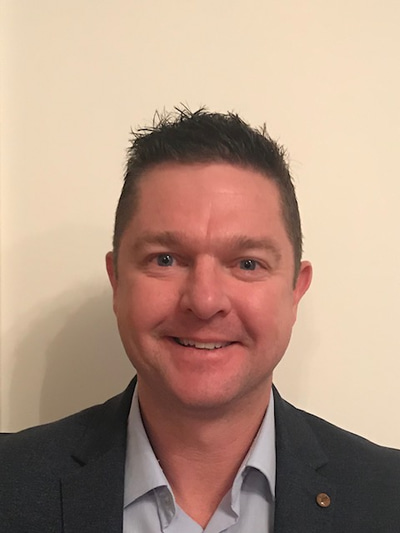- OT
- Industry
- Eyewear and lenses
- “Groundbreaking science is the foundation that underpins Gen S”
“Groundbreaking science is the foundation that underpins Gen S”
Ken McInerney, global engineering and technology platform director at Transitions Optical, tells OT about the science behind the half-decade journey to create a ‘no compromise’ lens

18 March 2024
Where did the initial idea for Gen S come from, and how was that need identified?
It was a five-year development to deliver Gen S. Because of the brief we had, the challenge was to try to get the speed and the kinetics [the time it takes for the lens to change colour in different light conditions] to less than two minutes, and to try to get the uniformity of activation and fade-back across all eight lens colours.
It was a combination of inputs from four or five areas. We had the formulation scientists pushing new possible colours or options. We then had the commercial part of the organisation saying they would like to have colours in this space, at this type of speed, or with this type of activation.
Then we’ve got technical insights. We have a medical advisory board. We are trying to tap into world renowned experts in particular spaces, to see if there are benefits with dynamic lens solutions that we can build into the product.
So, we have a combination of tech push, consumer pull, market insights, and academic insights. When you put all that into the melting pot, it gives you the brief of where we were trying to land. We started with a funnel of ideas, and then we tried to whittle those ideas down over time through discovery, engineering, and innovation.
We started with a funnel of ideas, and then we tried to whittle those ideas down over time through discovery, engineering, and innovation
Can you describe this lens innovation in one sentence?
It’s a one of a kind, no compromise lens, that, for the first time ever, now competes with a clear lens.

How did you go about developing the Ruby lens?
We wanted to widen the colour palette and to bring on a new colour, Ruby, based on customer feedback and insights that we had. This was an area of the colour wheel that we were not active in, but that had huge potential. That was built into the project as a must-have deliverable.
It’s not easy to create a red, so that dye space took a lot of formulation and chemistry changes to make it happen. It was great to be able to create that.
All eight lens colours are consistent. There is no compromise. If you’re a consumer, you can pick any colour – they are all as good as each other, and you can compare them with any frame that you want. It opens up, hopefully, a whole new discussion between the eye care practitioner (ECP) and the consumer.
How important was it to have the science behind it so solid?
It was huge. Optometrists and ophthalmologists are sitting in front of patients and are medically trained. So for us to have partnerships with the likes of Professor Billy Hammond [of the Vision Sciences Laboratory at the University of Georgia] and Professor Pablo Artal [Professor of optics at the University of Murcia], who are world experts in that space, and for them to stand on stage, shoulder-to-shoulder with Transitions and substantiate the claims we’re making – that kind of data that gives huge credibility and confidence to doctors, optometrists and ophthalmologists to say ‘okay, this isn’t marketing information. This is true, data driven, irrefutable science, which these guys are willing to stand by. They are publishing it.’ Groundbreaking science is the foundation that underpins Gen S.
How the Gen S was tested in the lab
Participants were tested with either a clear lens or the Transitions Gen S lens, to see how these different lenses affected their response to the light source.
“We found that, when you use these bright light flashes, it disables their vision for a little while, and bleaches photopigment,” Hammond said.
He added: “It takes a while for them to rejoin and for visual sensitivity to return. That’s photo stress.”
The subjects wearing the Transitions Gen S lens saw their recovery and ability to see contrast sped up by about 40% in six seconds, Hammond said.
He emphasised the real-world implications of this speed: “It’s a huge amount, to see that much sooner. If you’re driving your car at 60 miles per hour and you see six seconds sooner, that’s about 200 yards of distance. So, two football fields. That’s a big change.”
The team also measured glare discomfort, both subjectively using a numerical scale, and objectively, using a high-resolution camera with biometric software to measure how much participants’ squints changed whilst experiencing light stress.
“When they used the Transitions Gen S lens it reduced their squinting by about 50%,” Hammond said.
He noted that he is preparing the team’s findings for publication, and that he will also be presenting at the Association of Research in Vision and Ophthalmology annual meeting in Seattle in May.
“We have seen that the Transitions Gen S lens is an effective assistive technology for reducing this very significant problem of light stress,” he added.
What is the value of ECPs being able to independently look at the science and evaluate it before they recommend Gen S to patients?
They can reference it, so they can talk to patients with real confidence that there is rock solid, scientific data behind the products they are discussing and proposing to them. It’s no longer a conversation just about colour: there are benefits to the speed in terms of visual recovery. There is a reduction of stress; there is reduction in contrast sensitivity.
All of these benefits are tangible, solid and substantiated. I think that’s going to make the conversation much easier for ECPs, because they see world-renowned experts substantiating it through the science.
Transitions is established in the world in terms of photochromics. We already had the number one photochromic lens in the market, which was Gen 8. But this is taking it to a whole new level, in the context of speed, and the context of smart, and in the context of style.
Could you identify one key problem that the lens will solve for patients?
I would say the speed of fade-back in all colours, in less than two minutes. It is super-fast. When you’re going from indoors to outdoors and outdoors to indoors, it’s a seamless transition.
Sometimes people don’t like to come back indoors and feel that their lenses are dark, and that people are looking at them. That’s no longer going to be an issue, because within 45 seconds, that lens is already faded back. When you go outside, it’s within seven seconds category two, and within 25 seconds it’s category three. It’s blisteringly fast, when you walk outside.
Speed has always been the Holy Grail. We didn’t land on two minutes by chance – that came out of the scientific studies we’ve done. We were told from 90 to 120 seconds is the sweet spot. We really feel we’ve landed on the technical sweet spot of where we want to be, from a fadeback perspective. I think that’s going to bring great visual comfort to wearers.
You can pair it with any frame, and you’ve so many colours. If you want to be a bit bolder, you pick a ruby lens or a sapphire lens. Or to be a little bit more subdued, you can pick a green or a grey lens. There’s no difference anymore. The grey is as good as the green, as good as sapphire, as good as amethyst, as good as Ruby – they’re all equally as fast.
Every one of those lenses fades back in less than two minutes. That wasn’t the case before. And they all get the category three darkness; that wasn’t the case before. There’s no more compromise, or limiting of your choice. You can pick whatever you want.
Speed has always been the Holy Grail. We didn’t land on two minutes by chance
What is your top ambition for the first year of this product being on the market?
We’re launching on April 9 in the US, and then there is going to be a staggered launch throughout 2024. We’re really hoping that the consumer reaction and the ECP reaction will be as positive as we’re seeing here [at Transitions Academy].
Naturally, the goal will be to drive our penetration rates, and to try and drive broad awareness so that we grow the category.
Any last word on the Gen S for OT readers?
For me, it’s about the three dimensions: speed, smart and style. No compromise.
Also, the health and wellness benefits in terms of contrast sensitivity reduction, photo stress and light stress reduction. We’re using external advocates, who are willing to stand shoulder to shoulder with us, only because they know that the science confirms it 100%. It’s 40% better contrast sensitivity, not 2% or 3%.
When Professor Billy Hammond and Professor Artal are willing to stand on stage and support it, we know the foundational blocks are rock solid. For me, those are the key messages.
Read more on the Transitions Gen S lens
Advertisement


Comments (0)
You must be logged in to join the discussion. Log in